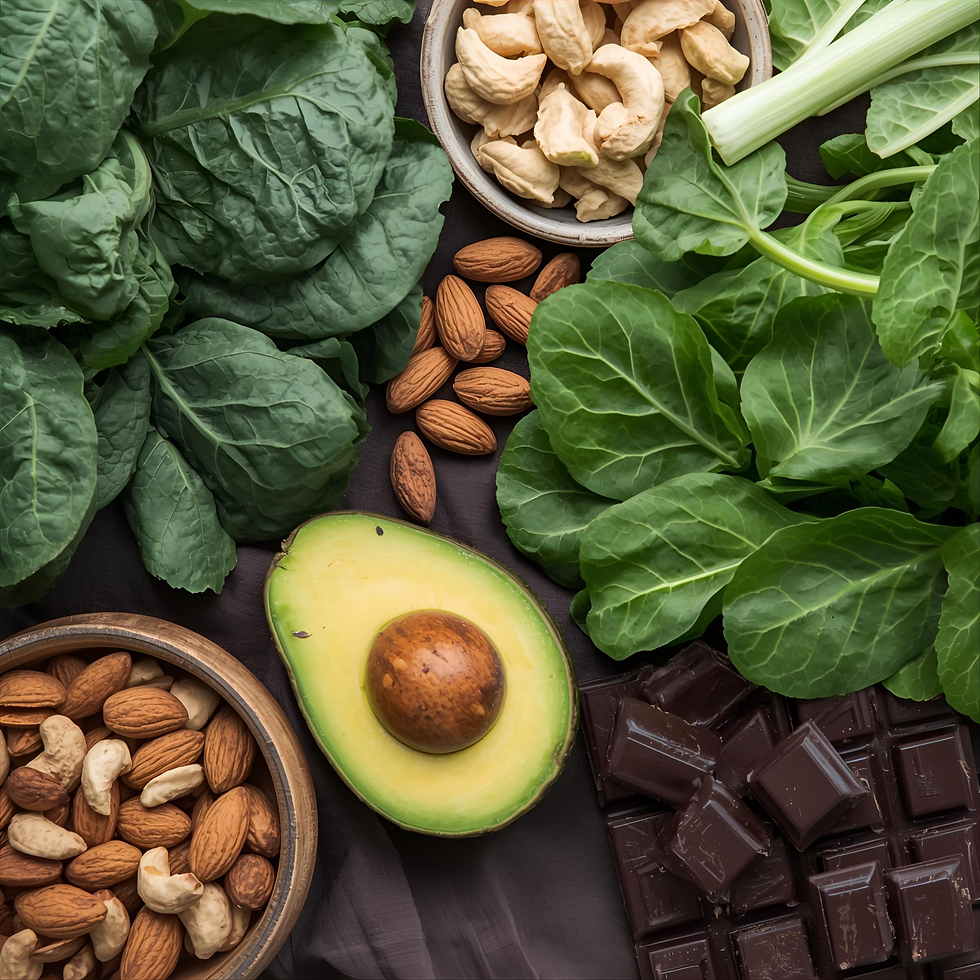An Introduction to Fermentable Foods
- Emma Hammond

- Oct 16
- 3 min read
In recent years, fermentable foods have found their way back into kitchens, health food shops, and even fine dining menus across the UK. From tangy sauerkraut to fizzy kombucha, fermentation is more than just a culinary trend — it’s a centuries-old method of preservation that’s also incredibly good for you.

What Are Fermentable Foods?
Fermentation is a natural process where microorganisms like bacteria, yeasts, and moulds convert sugars and starches into acids, gases, or alcohol. This not only helps preserve food but also changes its flavour, texture, and nutritional profile.
Some common examples of fermentable foods include:
Yoghurt – made from milk fermented with lactic acid bacteria.
Sauerkraut – shredded cabbage fermented by lactic acid bacteria.
Kefir – a tangy, drinkable yoghurt made with kefir grains.
Kimchi – a Korean dish of fermented vegetables and spices.
Kombucha – a sweetened tea fermented with a symbiotic culture of bacteria and yeast (often called a SCOBY).
Sourdough bread – made using a fermented starter of flour and water.
The Benefits of Eating Fermentable Foods
Improved Gut Health Fermented foods are rich in beneficial bacteria known as probiotics. These microbes support the balance of gut flora, which plays a vital role in digestion, nutrient absorption, and even mental health.
Enhanced Nutrient Absorption The fermentation process can increase the availability of certain nutrients, including B vitamins, and make minerals like iron easier for your body to absorb.
Better Digestion Many people find fermented foods easier to digest. For instance, the bacteria in yoghurt help break down lactose, making it more tolerable for those with mild lactose sensitivity.
Immune System Support Around 70% of the immune system resides in the gut, so maintaining healthy gut flora through fermented foods can help strengthen your natural defences.
Promotes a more diverse and balanced gut microbiome, which is linked to reduced inflammation, better heart health, potential mood improvements, and support for healthy weight management
Rich Flavour and Variety Beyond their health benefits, fermented foods are deliciously complex. The tangy, sour, and sometimes fizzy qualities can elevate everyday meals.
Simple Fermented Food Recipes to Try at Home
1. Homemade Sauerkraut
Ingredients:
1 medium cabbage
1 tbsp sea salt
Method:
Shred the cabbage finely and place it in a large bowl.
Sprinkle with salt and massage it with your hands until the cabbage releases liquid.
Pack the cabbage tightly into a sterilised jar, pressing down to submerge it in its own brine.
Cover with a clean cloth or fermentation lid and leave at room temperature for 5–7 days.
Once it reaches your desired tanginess, store it in the fridge.
2. Kefir Smoothie
Ingredients:
250ml kefir (plain or flavoured)
½ banana
A handful of berries
1 tsp honey (optional)
Method:
Blend all ingredients until smooth.
Serve chilled for a probiotic-rich breakfast or snack.
3. Quick Kimchi (Beginner-Friendly)
Ingredients:
1 Chinese cabbage (napa cabbage)
2 tbsp sea salt
2 cloves garlic, minced
1 tbsp ginger, grated
1 tbsp chilli flakes
1 tbsp fish sauce (optional)
Method:
Chop the cabbage and sprinkle with salt. Leave for 2 hours, then rinse and drain.
Mix garlic, ginger, chilli flakes, and fish sauce to form a paste.
Massage the paste into the cabbage and pack tightly into a jar.
Leave at room temperature for 1–3 days, then refrigerate.
A Word of Caution
When fermenting at home, cleanliness is key. Always use sterilised jars and utensils to prevent unwanted bacteria from spoiling your food.
Final Thoughts
Fermentable foods are a simple yet powerful way to support your health naturally. They connect us to ancient traditions of food preservation while offering modern benefits for digestion, immunity, and overall wellbeing. Whether you start with a spoonful of yoghurt or dive into making your own kimchi, adding a little fermentation to your diet could do wonders for your gut — and your taste buds.



